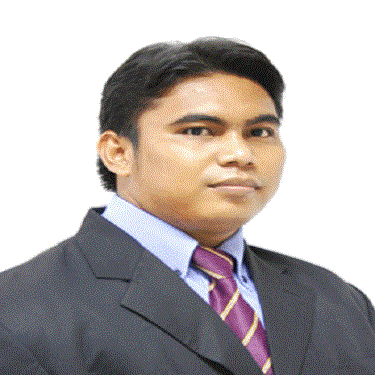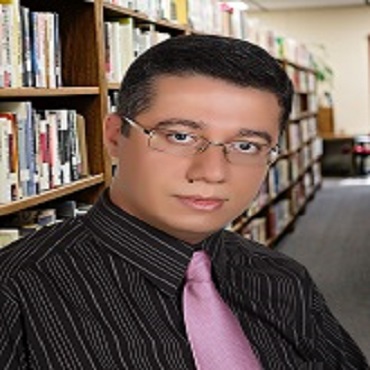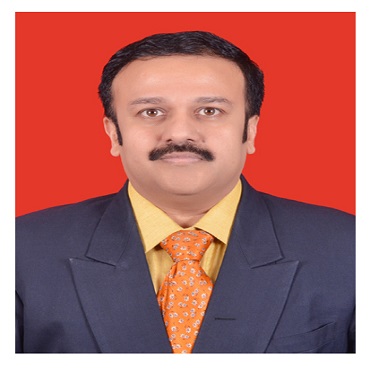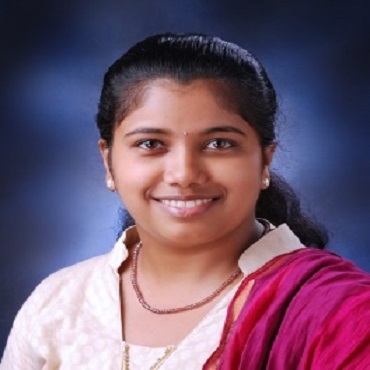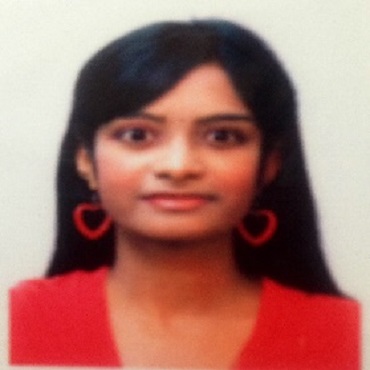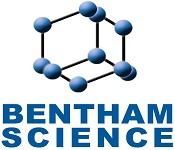
Medical Imaging 2019

Theme: Medical Imaging for Improved Diagnosis and Treatment
With great pleasure we are inviting you to the upcoming Medical Imaging Conference 2019 that focus on the theme: "Medical Imaging for Improved Diagnosis and Treatment" scheduled in Singapore City, Singapore during February 25-26, 2019. Medical Imaging Congress gives a phase to globalize the investigation by presenting a talk among endeavors, educational affiliations and taking in return from research to industry. Medical Imaging and Clinical Research Conference focuses in communicating data and offers new considerations among the specialists, industrialists, and understudies from different domains of Medical Imaging to share their investigation experiences and appreciate savvy trades and novel sessions at the event. At Medical Imaging Meeting you can increase new information which will be outstandingly significant for development in the field and creating new plans and thoughts to improve yourself and your master calling. The field of Medical Imaging in diagnostics have not quite recently helped the headway in different fields in science and advancement yet, moreover, contributed towards the difference in the idea of human life in a manner of speaking. This has ended up being possible with the various disclosures and advancements advancing the change of various applications.
Medical Imaging Conference | Therapeutic Conference | Medical Imaging Meeting | Clinical Research Conference | Medical Imaging Events | Medical Imaging Events | Clinical Research Events | Medical Imaging Workshop | Clinical Research Workshop | Restorative Imaging Conference
Session-1: Medical Imaging
Medicinal Imaging is the strategy and procedure of making visual portrayals of the inside of a body for clinical investigation and therapeutic mediation and in addition visual portrayal of the capacity of a few organs or tissues. Medicinal imaging tries to uncover interior structures covered up by the skin and bones, and in addition to analyze and treat the ailment. Therapeutic imaging additionally builds up a database of typical life systems and physiology to make it conceivable to distinguish variations from the norm. In spite of the fact that imaging of expelled organs and tissues can be performed for therapeutic reasons, such methods are generally considered a piece of pathology rather than restorative imaging.
Medical Imaging Conference | Therapeutic Conference | Medical Imaging Meeting | Clinical Research Conference | Medical Imaging Events | Medical Imaging Events | Clinical Research Events | Medical Imaging Workshop | Clinical Research Workshop | Restorative Imaging Conference
Session-2: Therapeutic Imaging
Therapeutic imaging eludes to considerable measure diverse advancements that are utilized to see the human body so as to investigate, screen, or treat medical conditions. Medical imaging constitutes a database of normal anatomy and physiology to make it desirable to identify abnormalities. This includes the use of a variety of modalities, some of which may involve a risk of harmful ionizing emission. Due to the brisk advances in imaging technology, such as the introduction of multi-detector arrays and fast MRI protocols, both the number and variety of radiological applications are hysterically increasing. Each kind of innovation gives distinctive data about the territory of the body being considered or treated, identified with conceivable infection, damage, or the viability of therapeutic treatment.
Medical Imaging Conference | Therapeutic Conference | Medical Imaging Meeting | Clinical Research Conference | Medical Imaging Events | Medical Imaging Events | Clinical Research Events | Medical Imaging Workshop | Clinical Research Workshop | Restorative Imaging Conference
Session-3: Ultrasound Imaging
It uses high-frequency sound waves to view inside the body. Because ultrasound images are captured in real-time, they can also show the migration of the body's internal organs as well as blood flowing through the blood vessels. Unlike X-ray imaging, there is no ionizing radiation exposure associated with ultrasound imaging. This is commonly correlated with imaging the fetus in pregnant women. The ultrasound image is produced based on the reflection of the waves off of the body frame. The power of the sound signal and the time it takes for the wave to travel through the body provide the information necessary to produce an image.
Medical Imaging Conference | Therapeutic Conference | Medical Imaging Meeting | Clinical Research Conference | Medical Imaging Events | Medical Imaging Events | Clinical Research Events | Medical Imaging Workshop | Clinical Research Workshop | Restorative Imaging Conference
Session-4: Magnetic Resonance Imaging
MRI is a therapeutic imaging strategy for making images of the interior structures of the body. MRI scanners use strong magnetic fields and radio waves to make images. It uses powerful magnets to demarcate and excite hydrogen nuclei of water molecules in human tissue, producing an appreciable signal which is spatially encoded, resulting in images of the body. Like CT, MRI habitually creates a 2D image of a thin "slice" of the body and is therefore studied a tomographic imaging technique. Contemporary MRI instruments are capable of producing images in the form of 3D blocks, which may be considered a generalization of the single-slice, tomographic, concept. Amid an MRI exam, an electric current is gone through curled wires to make a brief attractive field in a patient's body. Radio waves are sent from and got by a transmitter/recipient in the machine, and these signs are utilized to make computerized pictures of the filtered zone of the body. MRI scans last from 20 - 90 minutes, depending on the part of the body being imaged.
Medical Imaging Conference | Therapeutic Conference | Medical Imaging Meeting | Clinical Research Conference | Medical Imaging Events | Medical Imaging Events | Clinical Research Events | Medical Imaging Workshop | Clinical Research Workshop | Restorative Imaging Conference
Session-5: Pediatric X-ray Imaging
Restorative x-beam imaging exams, which incorporate Computed tomography (CT), fluoroscopy, and traditional X-beams, utilize the most reduced radiation dosage obligatory, considering the size and age of the patient. It needs committed imaging conventions to procure the pictures, there is a requirement for acclimated anesthesia for profound techniques, for example, MRI, particular preparing is required for the medicinal services unit included, and exact information and skill ought to be connected for figuring the pictures. It requires consideration for radiation exposure if ionizing radiation is being used. One of the challenges for clinical care personnel is to gain the child's trust and co-operation before and throughout the duration of an examination, which can prove to be difficult in children who may be ill and have pain. This is important to acquire quality images and prevent repeat examinations.
Medical Imaging Conference | Therapeutic Conference | Medical Imaging Meeting | Clinical Research Conference | Medical Imaging Events | Medical Imaging Events | Clinical Research Events | Medical Imaging Workshop | Clinical Research Workshop | Restorative Imaging Conference
Session-6: Radiography
It is an imaging approach using X-rays to view the internal structure of an object. To construct the image, a beam of X-rays, a form of electromagnetic radiation, are composed by an X-ray alternator and are projected toward the object. A convinced amount of X-ray is absorbed by the object, defenseless on its density and composition.
The X-rays that pass through the object are conquering behind the object by a detector. Two forms of radiographic images are used Projection radiography and fluoroscopy. Fluoroscopy delivers ongoing pictures of inside structures of the body, however, draws in a consistent contribution of x-beams, at a lower measurements rate. Projection radiographs, regularly known as x-beams, are frequently used to control the sort and span of a break and in addition for identifying obsessive changes in the lungs.
Medical Imaging Conference | Therapeutic Conference | Medical Imaging Meeting | Clinical Research Conference | Medical Imaging Events | Medical Imaging Events | Clinical Research Events | Medical Imaging Workshop | Clinical Research Workshop | Restorative Imaging Conference
Session-7: Computed Tomography
It is also frequently referred to as a CAT scan, is a Medical Imaging process that combines multiple X-ray projections taken from distinct angles to produce detailed cross-sectional images of areas indoors the body. CT images allow doctors to get very decisive, 3-D views of convinced parts of the body, like as soft tissues, the pelvis, blood vessels, the lungs, the brain, the heart, abdomen, and bones. CT is also generally the preferred method of analyzing many cancers, such as liver, lung and pancreatic cancers. Digital geometry processing is used to farther provoke a three-dimensional volume of the inside of the object from an extensive sequence of two-dimensional radiographic images taken around a single axis of rotation. It has all the more as of late been utilized for a preventive solution or screening for an ailment, for instance, CT colonography for individuals with a high danger of colon tumor, or full-movement heart checks for individuals with a high danger of coronary illness.
Medical Imaging Conference | Therapeutic Conference | Medical Imaging Meeting | Clinical Research Conference | Medical Imaging Events | Medical Imaging Events | Clinical Research Events | Medical Imaging Workshop | Clinical Research Workshop | Restorative Imaging Conference
Session-8: Optical Imaging
Diffuse optical Imaging is a method of designing using near-infrared spectroscopy or fluorescence-established methods. When used to conceive 3D volumetric models of the imaged material DOI is referred to as diffuse optical tomography, though 2D imaging methods are confidential as diffuse optical topography. The disadvantage of optical imaging is the inadequacy of penetration depth, exclusively when working at visible wavelengths. The depth of penetration is linked to the absorption and scattering of light, which is primarily a function of the wavelength of the excitation source. Light is absorbed by endogenous chromophores found in living tissue. Examples include optical microscopy, spectroscopy, endoscopy, scanning laser ophthalmoscopy, and optical coherence tomography.
Medical Imaging Conference | Therapeutic Conference | Medical Imaging Meeting | Clinical Research Conference | Medical Imaging Events | Medical Imaging Events | Clinical Research Events | Medical Imaging Workshop | Clinical Research Workshop | Restorative Imaging Conference
Session-9: Near Infrared Imaging
Close Infrared Spectroscopy and Imaging utilizes nearby infrared light in the vicinity of 650 and 950 nm to non-obtrusively test the solidification and oxygenation of hemoglobin in the cerebrum, muscle alongside different tissues and is worn e.g. to identify changes persuaded by mind action, damage, or sickness. In brain analysis it complements functional magnetic resonance imaging (fMRI) by implementing measures of both oxygenated and deoxygenated haemoglobin concentrations and by permissive studies in populations of subjects with experimental paradigms that are not amenable to fMRI. Various close infrared (NIR) fluorophores have been utilized for in vivo imaging, including Kodak X-SIGHT Dyes and Conjugates, Pz 247, DyLight 750 and 800 Fluors, Although NIRS is commonly performed adopting instruments that emitted endless wave light and commonly measure the intensity of light inseminate through the tissue, it is also desirable to perform measurements where the source of light is intensity inflected (between 50 to 500 MHz) or oscillate (typically pulsed on for less than 100 ps) and the detector resolves correspondingly the phase or temporal delay of the light propagating over the tissue. These measurements are usually termed frequency domain or time domain measurements and because they provide direct measurements of photon propagation delay within the tissue as well as the intensity
Medical Imaging Conference | Therapeutic Conference | Medical Imaging Meeting | Clinical Research Conference | Medical Imaging Events | Medical Imaging Events | Clinical Research Events | Medical Imaging Workshop | Clinical Research Workshop | Restorative Imaging Conference
Session-10: Oncology Clinical Research
Medical Imaging and Clinical Research Conference aims at felicitating the meaningful discussion on modalities of improvement, contact sustenance,and care are used inside routine illness care to address and upgrade signs and individual fulfillment. Clinical Research Conference gathers professionals to discuss various ways challenges of paraneoplastic issue, or from treatment of harm that require provoke thought and reversal.
Medical Imaging Conference | Therapeutic Conference | Medical Imaging Meeting | Clinical Research Conference | Medical Imaging Events | Medical Imaging Events | Clinical Research Events | Medical Imaging Workshop | Clinical Research Workshop | Restorative Imaging Conference
The worldwide medical imaging market measure was esteemed USD 33.7 billion of every 2016 and is required to develop at a CAGR of 5.7% over the estimated time frame. Main considerations driving development of this industry is expanding interest for beginning period conclusion of ceaseless infection and rising maturing socioeconomics, which is required to support the request of symptomatic imaging over the globe.
The report considers the worldwide analytic imaging market over the estimated time of 2016 to 2021. The market is relied upon to achieve ~USD 36.43 Billion by 2021, at a CAGR of 6.6% from 2016 to 2021. Various factors, for example, expanding speculations, finances, and allows by government bodies for modernization of imaging offices; expanding ventures from open private associations; development in the quantity of indicative imaging focuses; rising pervasiveness of tumor; expanding geriatric populace and the resulting development in the rate of different infections; innovative headways in analytic imaging modalities; and expanding inclination for insignificantly intrusive medications drive the development of this market.
In any case, factors, for example, the high cost of demonstrative imaging frameworks, innovative confinements related with independent frameworks, negative human services changes in the U.S., and the deficiency of helium are relied upon to limit the development of this market to a specific degree.
Why Singapore?
Singapore’s healthcare system is the envy of the west, with the following factors being a key-factor for its efficient and affordable model: Public-Private Balance, Sustainable Financing, Strong Regulatory Governance. A system this good can serve as a benchmark for other countries, to improve successful implementation of policies and managing the economics as well.
In Singapore, more and more students are taking up clinical research as their career. The Singapore Ministry of Health states that the number of registrants for technicians courses are on the upraise. To encourage more people to take up clinical researchers, the government is also offering scholarships for students.
Currently, there are 29,894 Registered Medical Education Centers in Singapore, yet reports suggest that the country’s number of long-term care providers must be increased by 45% by 2020, to meet the requirements of the ageing population (The Lien Foundation, July 2018).
Industry Insights
Based on item, the market is fragmented into X-beam imaging frameworks, Computed tomography scanners, ultrasound imaging frameworks, Magnetic Resonance Imaging, and atomic imaging frameworks. Every methodology is additionally separated into sub fragments. The X-beam and ultrasound frameworks advertise is partitioned based on innovation and transportability; though, CT scanners are portioned by cut sort. X-ray frameworks are isolated based on engineering and field quality and the atomic imaging frameworks showcase is classified into SPECT and Hybrid PET frameworks. These frameworks are additionally partitioned into independent and half breed modalities.
In view of utilization, the market is fragmented into obstetrics/gynecology well being, orthopedics and musculoskeletal, neurology and spine, cardiovascular and thoracic, general imaging, bosom well being, and others. In view of end client, the market is fragmented into doctor's facilities, indicative imaging focuses, and opposite end clients (counting pharmaceutical and biotechnology organizations, scholastic and research focuses, sports foundations, and CROs).
U.S. medical imaging market, by product, 2014 - 2025 (USD Billion)
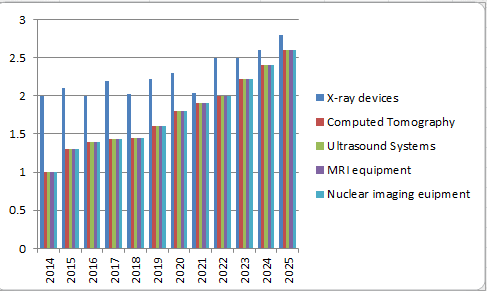
Product Insights
The medical imaging market is classified on the basis of product into X-ray, Computed Tomography, ultrasound system, MRI equipment, and nuclear imaging. The X-ray segment held the largest market share in 2016 and is expected to maintain its dominance over the forecast period.
This can be attributed to the increasing prevalence of orthopaedic injuries and accidents and the demand for point of care testing, which is facilitating the sale of portable devices. The X-ray devices are further segmented into stationary, and portable (handheld, and mobile).
The nuclear imaging segment is expected to be the fastest growing due to the development of new radiotracers, raising prevalence of cancer and cardiovascular diseases, and the introduction of new products through innovation and advancement. According to the American Cancer Society, Surveillance Research, there were about 1,665,540 cases of cancer in 2014, 1,685,210 cases of cancer in 2016.
Global medical imaging market, by application, 2016 (%)
Amid 2016, the general X-beam fragment was one of the quickest developing item portions in the worldwide therapeutic imaging market and will keep on dominating the market in the coming years. This fragment represents the most elevated income amid the estimate time frame as contrasted and different strategies, regardless of being the customary technique for therapeutic imaging. The progressions in innovation and expanded appropriation of compact X-beam machines will impel this present section's development prospects until the finish of 2021.
North America is the biggest market inferable from the appropriation of cutting edge framework and mindfulness about mechanical progressions. The Asia Pacific is anticipated to be the quickest developing business sector in light of the ascent in the geriatric populace, repayment approaches and tolerant mindfulness level in rising nations like India, China, Malaysia, and the Philippines.
A portion of the key players in worldwide Medical Imaging market are Mindray Medical International, Alpinion Medical Systems, BenQ Medical Technology, Boston Scientific, Carestream Health Inc, Esaote SpA, Fujifilm Holding, GE Healthcare, Hitachi Medical Corporation, Konica Minolta, Philips Healthcare, Shimadzu Corporation, Siemens Healthcare, Sonosite Inc and Toshiba Medical Systems.
Products Covered:
- Computed Tomography Scanners
- Portable/Mobile
- Stationary
- By Technology
- Low Slice Scanners
- Medium Slice Scanners
- High Slice Scanners
- Mammography Systems
- Analog Mammography Systems
- Digital Mammography Systems
- MRI Systems
- By Field Strength
- Low-to-Mid-Field MRI Systems
- High- & Very-High-Field MRI Systems
- Ultra-High-Field MRI Systems
- Closed MRI Systems
- Open MRI Systems
- Nuclear Imaging Systems/Radionuclide
- Single-Photon Emission Computed Tomography (SPECT) Scanners
- Position Emission Tomography (PET) Scanners
- Ultrasound Systems
- 2D
- 3D & 4D
- Doppler
- High Intensity Focused Ultrasound (HIFU)
- Extracorporeal Shockwave Lithotripsy (ESWL)
- By Portability
- Cart/Trolley Based
- Compact/Portable
- X-ray Imaging Systems
- Analog Imaging Systems
- Digital Imaging Systems
- By Portability
- Portable X-ray Imaging Systems
- Stationary X-ray Devices
- Tactile Imaging
- Thermography
- Elastography
Universities in Singapore:
Yong Loo Lin School of Medicine, Singapore
Academy of Medicine, Singapore
Duke-NUS Graduate School of Medicine, Singapore
John Hopkins International Medical centre, Singapore
Organization Associated in the USA:
American Association of Physicists in Medicine, USA
American Association for Women Radiologists, USA
American Board of Radiology, USA
American Brachytherapy Society, USA
American College of Medical Physics, USA
American College of Nuclear Medicine, USA
American College of Nuclear Physicians, USA
American College of Radiology, USA
Colombian Association of Radiology, USA
American College of Radiation Oncology, USA
Association of Educators in Imaging and Radiologic Sciences, USA
The Association for Medical Imaging Management, USA
Australian Institute of Radiography, USA
American Institute of Ultrasound in Medicine, USA
Mexico Association of Ultrasound in Medicine, USA
American Osteopathic College of Radiology, USA
American Physical Society, USA
Asia Pacific Society of Cardiovascular & Interventional Radiology, USA
American Registry of Diagnostic Medical Sonographers, USA
Association for Radiologic and Imaging, USA
American Roentgen Ray Society, USA
American Registry of Radiologic Technologists, USA
Institutes in the UK:
British Institute of Radiology, UK
British Nuclear Medicine Society, UK
British Society of Interventional Radiology, UK
British Society of Neuroradiologists, UK
Institutes in Canada:
Canadian Association of Medical Radiation Technologists, Canada
Canadian Association of Radiologists/L'Association canadienne des radiologists, Canada
Canadian Association of Radiation Oncologists/Association Canadienne des Radio-Oncologues, Canada
Canadian College of Physicists in Medicine, Canada
Computerized Medical Imaging Society, Canada
Institutes in Japan:
The University of Tokyo, Japan
Kyoto University, Japan
Osaka University, Japan
Tohoku University, Japan
Keio University, Japan
Nagoya University, Japan
Institutes in South Korea
Yonsei Universiy, South Korea
The University of Ulsan, South Korea
Sungkyun University, South Korea
Wonkwang University, South Korea
Soonchunhyang University, South Korea
- Medical Imaging and its Application
- Therapeutic Imaging
- Ultrasound Imaging
- Molecular Imaging, Functional imaging and Integrated Therapy
- Magnetic Resonance Imaging
- Radiography
- Computed Tomography
- Optical Imaging
- Oncology Clinical Research
- Journal of Clinical & Experimental Radiology
- Archives of Medical Biotechnology
- Journal of Clinical Images and Case Reports
8 Organizing Committee Members
3 Renowned Speakers
Arathy John
Manipal Academy of Higher Education,
India
Keerthana Wilson
Assistant Professor and Echocardiographer
India
Kalaivaane Shanmugnathan
Mahasa University College
Malaysia



